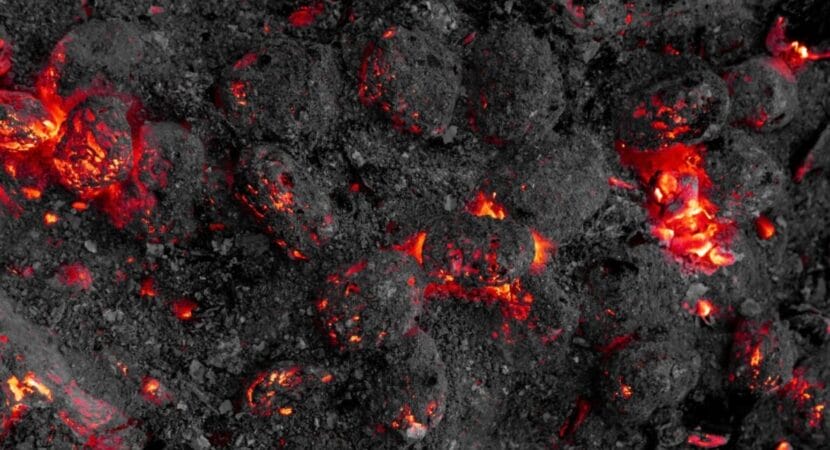
Opportunity in the Ashes: partial replacement of cement in concrete and mortars with volcanic ash, is revolutionizing the construction sector
A revolutionary discovery: The search for sustainable materials turned the unexpected into a solution. The volcanic ash, legacy of one of the biggest natural disasters in Spain, emerge as a promising alternative to traditional cement. This advancement not only challenges civil construction conventions but also paves the way for more eco-efficient buildings.
The path to sustainability in construction is paved with volcanic ash. The adoption of volcanic ash in construction is proof of the industry's innovation and commitment to sustainability. As we explore new materials and techniques, we pave the way for a future where construction not only respects the environment but also actively contributes to its preservation.
Volcanic ash: from tragedy to innovation in Gran Canaria
Eruptions release this building material: the unprecedented properties
Produced during volcanic eruptions, volcanic ash comprises a mixture rich in minerals and volcanic glass. Their unique properties – high mechanical resistance and significant reduction in environmental impact – position them as ideal candidates in sustainable civil construction.
The chemical composition of volcanic ash varies depending on the type of eruption and may contain aluminosilicates and compounds of iron, calcium and potassium. Typically this material has puzzolanic properties, which means it reacts with calcium hydroxide to form stable compounds.
Scientific research confirms: Volcanic ash can surpass cement in durability and strength
With regard to mechanical resistance, several studies have shown that the use of ash as a partial replacement for cement in concrete and mortars can improve resistant properties, especially if particles smaller than 45 microns.
With proper grinding, it is possible to use volcanic ash to make materials that are stronger than Portland cement. In fact, it is precisely what will be replaced and which is considered responsible for the heat wave effect that occurs in cities.
From a sustainability point of view, the use of this waste in the construction industry reduces CO2 emissions associated with conventional cement production. Furthermore, it represents a viable alternative for depositing and giving value to this type of waste.
Its applications range from supplementary cement to building blocks
Ash in construction is highly appreciated for its properties as a construction material. The ash from the La Palma volcano has unique characteristics due to its high content of silica, alumina and iron. In fact, they form a conglomerate similar to cement, albeit naturally.
These properties mean that ash can be used as a partial substitute for cement in the manufacture of concrete. Several companies in the construction and building materials sector have shown great interest in the ash from the La Palma volcano.
Its use is planned both in the Canary Islands and on the peninsula, taking advantage of its proximity by boat. Previous research has demonstrated the properties of volcanic ash, but the eruption of the La Palma volcano has thrust this source of sustainable building material into the spotlight.
Project that promises to change the future of civil construction in the world
A La Palma volcano eruption, which began on September 19, 2021, generated a large amount of volcanic ash. It is estimated that the eruption produced around 230 tons of ash in the first few days (imagine the entire process, which was the longest in the history of the archipelago). This is how they propose to use the ashes for construction in this place in Spain:

The Proresvolcán project is a pioneering initiative that aims to convert La Palma's volcanic ash into a valuable resource for civil construction. Funded by the Ministry of Education and supported by academic institutions and companies in the sector, the project seeks not only to validate the technical and environmental feasibility of using ash but also to encourage the adoption of more sustainable practices in the industry.
“This project seeks to transform volcanic waste into materials for the manufacture of mortar and concrete to replace part of the cement content”, explains the coordinator of Proresvolcán, Elena de la Fuente.
The volcanic residue will be used as the main component and the properties of the material obtained will be verified. She adds: “Reducing dependence on non-renewable resources in the production of construction materials and reducing CO2 emissions associated with cement manufacturing will be encouraged.”
According to Elena de la Fuente, among the advantages that the project presents is that “the pollution produced by the manufacture of concrete is reduced” and “20% of the cement will be replaced by ash”, thus reducing the amount of ash from the volcano that is considered waste.
Through this innovation, building with volcanic ash is not just a possibility; It is a reality on the rise, promising to revolutionize the way we build the future.









